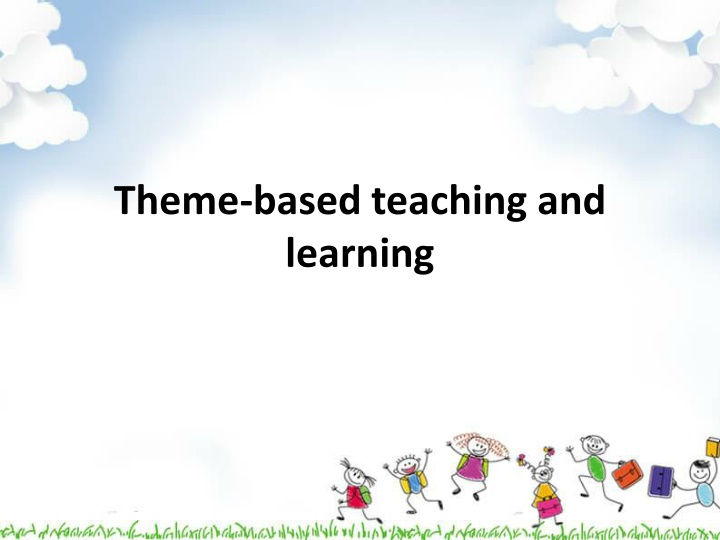
Effective Strategies for Theme-Based Teaching and Learning
Explore the origins and benefits of theme-based teaching, particularly in language education. Learn how to plan lessons around themes, engage students, and enhance learning outcomes through integrated approaches. Discover useful planning tools and strategies for implementing theme-based teaching effectively.
Download Presentation

Please find below an Image/Link to download the presentation.
The content on the website is provided AS IS for your information and personal use only. It may not be sold, licensed, or shared on other websites without obtaining consent from the author. If you encounter any issues during the download, it is possible that the publisher has removed the file from their server.
You are allowed to download the files provided on this website for personal or commercial use, subject to the condition that they are used lawfully. All files are the property of their respective owners.
The content on the website is provided AS IS for your information and personal use only. It may not be sold, licensed, or shared on other websites without obtaining consent from the author.
E N D
Presentation Transcript
Theme-based teaching and learning
Origins In primary schools when all classes are taught by one teacher. By covering one theme\topic different areas of the curriculum are taught in an integrated way. This way of teaching is suitable to the way young children naturally learn.
Theme based teaching of languages Children learn the foreign language through its use to carry thematic content i.e. while learning something else (usually connected to other subjects art, music, the environment..) It provides realistic and motivating use for the language; It requires high levels of knowledge and experience from the teachers.
A topic provides content for a range of language activities. It is a version of partial immersion education. Another name for it is plurilingual education or CLIL, and very similar is the activity based approach. Theme-based teaching offers activities which are of value to the overall educational and social development of the child not only English skills;
Planning theme-based teaching Three basic steps in planning: 1. Finding a theme 2. Planning content 3. Planning language learning tasks
Finding a theme A theme can come form: Children s current interests Topics being studied in other classes Story The children they can suggest or select a topic from a list Etc. Ex: spiders and mini creatures, circus, vegetables, Halloween, spring
Planning content Basic planning tools for theme-based teaching: Brainstorming mental process that starts from one idea and them sparks off others through random and spontaneous links. All posibilities are noted down and then used to select from. Webs (mind maps) a way of writing down ideas and connections without focusing them into linear forms as in lists or texts.
Planning strategy no.1 1. Brainstorming - think of what the theme includes people + objects+ actions+ typical events+ places - think of which types of discourses are associated with the above - determine sub-themes - search for material in English on the topic 2. Make a web based on brainstorming notes
Planning strategy no. 2 Build up web linking activities to areas of the school subjects and go from there.
Planning strategies with the children 1. Brainstorming and web making with the children: Ask them for words connected to the theme they can try first to say all they know in Eng. and latter give Serbian ideas which the teacher can translate. - this provides a quick assessment of their knowledge and interests;
Planning strategies with the children 2. Guiding questions Children and the teacher make a list of questions they want to find answers to. e.g. How many types of potatoes are there? Where do potatoes we eat come from? How many kilos of potato chips does the class eat a year?
Offer the children choice points where children can choose direction, activity or timing. You can offer them a few activities that they can choose from (but whatever they choose they are doing what you planned ) This develops the children s capacity for self- directed learning and is motivating for them. If you choose something yourself you are more likely to do it.
Outcomes/ products of the activities can be saved by each child in a separate folder. These materials can be used to make a book produced by a student or class which can be used for vocabulary revision (it will be extra engaging because it is their own work). Make visual displays in the classroom of the work done.
Encourage private speech in English Model language that children might use to talk to themselves as they do the activity such as: 1. Self-evaluating language How does this look? A little more red? 2. Self directed language First the head, than the body, than the tail.
Playing tapes of songs while children work will give them further exposure to the language and increase the chance that the vocabulary will be learned.
Homework Read: Chapter 8 Theme-based teaching and learning from the book Teaching Languages to Young Learners Lynne Cameron
